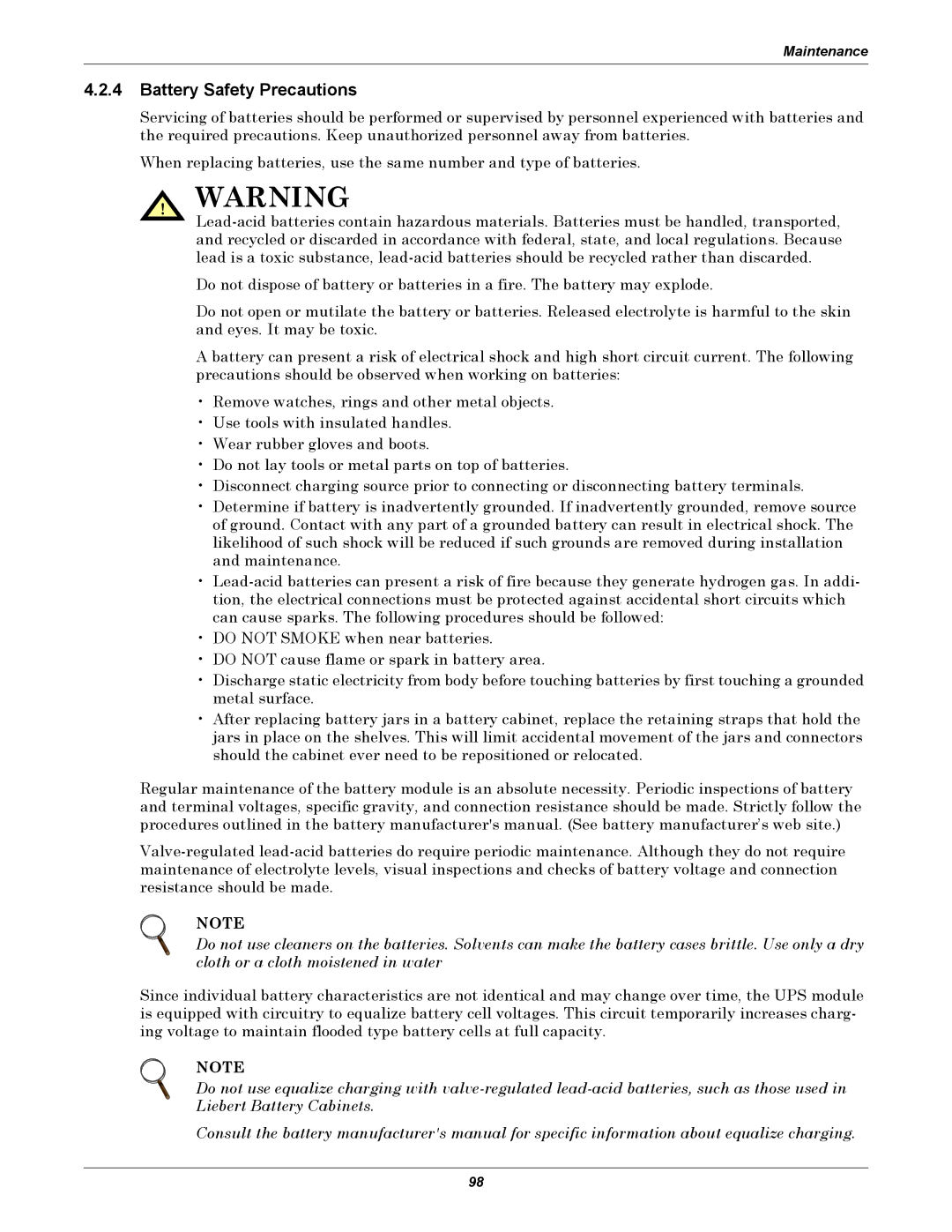
Maintenance
4.2.4Battery Safety Precautions
Servicing of batteries should be performed or supervised by personnel experienced with batteries and the required precautions. Keep unauthorized personnel away from batteries.
When replacing batteries, use the same number and type of batteries.
! WARNING
Do not dispose of battery or batteries in a fire. The battery may explode.
Do not open or mutilate the battery or batteries. Released electrolyte is harmful to the skin and eyes. It may be toxic.
A battery can present a risk of electrical shock and high short circuit current. The following precautions should be observed when working on batteries:
•Remove watches, rings and other metal objects.
•Use tools with insulated handles.
•Wear rubber gloves and boots.
•Do not lay tools or metal parts on top of batteries.
•Disconnect charging source prior to connecting or disconnecting battery terminals.
•Determine if battery is inadvertently grounded. If inadvertently grounded, remove source of ground. Contact with any part of a grounded battery can result in electrical shock. The likelihood of such shock will be reduced if such grounds are removed during installation and maintenance.
•
•DO NOT SMOKE when near batteries.
•DO NOT cause flame or spark in battery area.
•Discharge static electricity from body before touching batteries by first touching a grounded metal surface.
•After replacing battery jars in a battery cabinet, replace the retaining straps that hold the jars in place on the shelves. This will limit accidental movement of the jars and connectors should the cabinet ever need to be repositioned or relocated.
Regular maintenance of the battery module is an absolute necessity. Periodic inspections of battery and terminal voltages, specific gravity, and connection resistance should be made. Strictly follow the procedures outlined in the battery manufacturer's manual. (See battery manufacturer’s web site.)
NOTE
Do not use cleaners on the batteries. Solvents can make the battery cases brittle. Use only a dry cloth or a cloth moistened in water
Since individual battery characteristics are not identical and may change over time, the UPS module is equipped with circuitry to equalize battery cell voltages. This circuit temporarily increases charg- ing voltage to maintain flooded type battery cells at full capacity.
NOTE
Do not use equalize charging with
Consult the battery manufacturer's manual for specific information about equalize charging.
98
